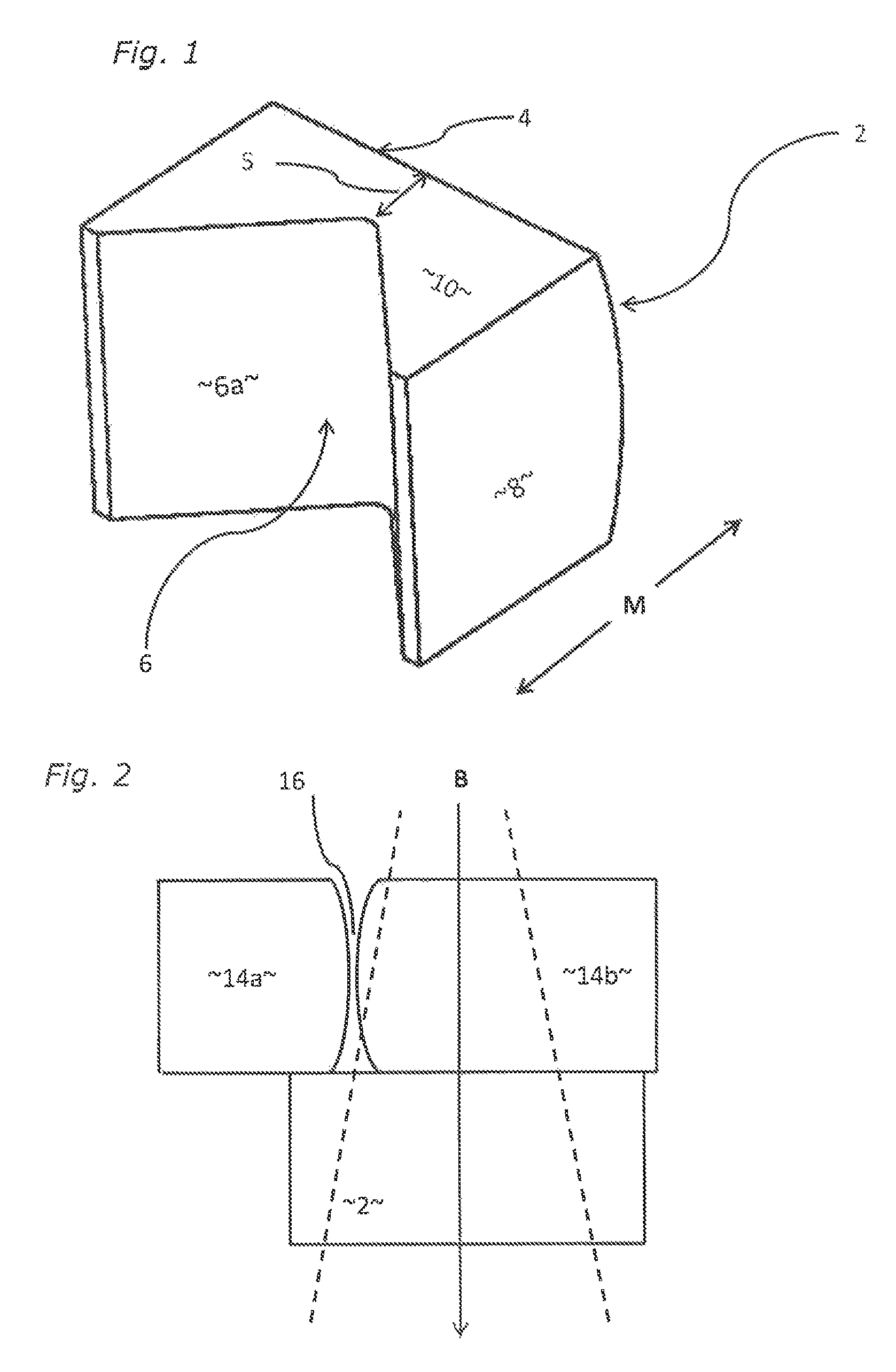Collimator for radiotherapy apparatus
a collimator and radiotherapy technology, applied in the field of collimators, can solve the problems of increasing manufacturing complexity and little additional benefit in weight saving, and achieve the effect of reducing the size and therefore the weight of the collimator
- Summary
- Abstract
- Description
- Claims
- Application Information
AI Technical Summary
Benefits of technology
Problems solved by technology
Method used
Image
Examples
Embodiment Construction
[0021]The present invention is predicated upon the movement of the leaves of an MLC. In one particular arrangement, where the MLC leaves are capable of travelling across the entire width of the aperture formed by the primary collimator edge, we have recognised that it is not necessary to have a collimator block which extends across the aperture for the entirety of its length (i.e. in the direction parallel to the direction of movement of the collimator block—“the movement direction”), because the main source of radiation leakage (the attenuation of which is a main objective of the collimator block) is not between the sides of the leaves but rather through the “gap” between opposing leaf tips. When the leaf tips are outside of the beam of radiation (i.e. extended fully across the aperture, so that the “gap” between the leaf tips is within the penumbra of the primary collimator edge and hence shielded from the radiation source) there is no radiation leakage as such, and the collimator...
PUM
 Login to View More
Login to View More Abstract
Description
Claims
Application Information
 Login to View More
Login to View More - R&D
- Intellectual Property
- Life Sciences
- Materials
- Tech Scout
- Unparalleled Data Quality
- Higher Quality Content
- 60% Fewer Hallucinations
Browse by: Latest US Patents, China's latest patents, Technical Efficacy Thesaurus, Application Domain, Technology Topic, Popular Technical Reports.
© 2025 PatSnap. All rights reserved.Legal|Privacy policy|Modern Slavery Act Transparency Statement|Sitemap|About US| Contact US: help@patsnap.com



